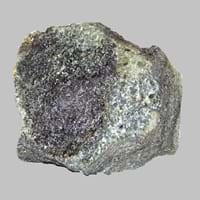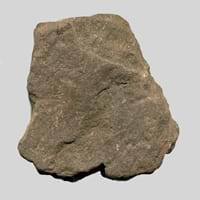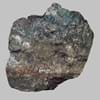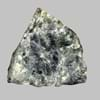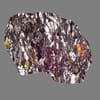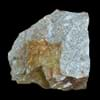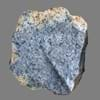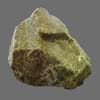Amphibolite and Shale
Definition
Definition
Amphibolite can be defined as a granular metamorphic rock which mainly consist of hornblende and plagioclase
Shale is a fine-grained sedimentary rock which is formed by the compaction of silt and clay-size mineral particles
History
Discoverer
Alexandre Brongniart
Unknown
Etymology
From Amphibole + -ite
From German Schalstein laminated limestone, and Schalgebirge layer of stone in stratified rock. From Old English scealu in its base sense of- thing that divides or separate,
Class
Metamorphic Rocks
Sedimentary Rocks
Sub-Class
Durable Rock, Hard Rock
Durable Rock, Medium Hardness Rock
Family
Group
Not Applicable
Not Applicable
Other Categories
Coarse Grained Rock, Medium Grained Rock, Opaque Rock
Fine Grained Rock, Opaque Rock
Texture
Texture
Banded, Foliated, Massive
Clastic, Splintery
Color
Black, Brown, Green, Grey
Black, Brown, Buff, Green, Grey, Red, Yellow
Maintenance
Less
More
Durability
Durable
Durable
Water Resistant
Yes
No
Scratch Resistant
Yes
No
Stain Resistant
Yes
No
Wind Resistant
No
No
Acid Resistant
Yes
No
Appearance
Foliated
Muddy
Uses
Architecture
Interior Uses
Countertops, Decorative Aggregates, Entryways, Floor Tiles, Flooring, Homes, Hotels, Kitchens
Decorative Aggregates, Homes, Interior Decoration
Exterior Uses
As Building Stone, As Facing Stone, Paving Stone, Office Buildings
As Building Stone, As Facing Stone, Office Buildings
Other Architectural Uses
Curbing
Curbing
Industry
Construction Industry
As Dimension Stone, Building houses or walls, Cobblestones, Construction Aggregate, for Road Aggregate, Landscaping, Production of Glass and Ceramics, Roadstone
Cement Manufacture, Construction Aggregate, for Road Aggregate, Making natural cement, Raw material for the manufacture of mortar
Medical Industry
Not Yet Used
Not Yet Used
Antiquity Uses
Artifacts, Sculpture, Small Figurines
Artifacts, Sculpture
Other Uses
Commercial Uses
Cemetery Markers, Commemorative Tablets, Creating Artwork
Creating Artwork, Pottery
Types
Types
Hornblendite
Red Shale, Black Shale, Green Shale, Grey Shale and Yellow Shale
Features
Clasts are smooth to touch, Matrix variable, Surfaces are often shiny
Easily splits into thin plates, Generally rough to touch, Very fine grained rock
Archaeological Significance
Monuments
Used
Used
Famous Monuments
Data Not Available
Jantar Mantar in India
Sculpture
Used
Used
Famous Sculptures
Data Not Available
Data Not Available
Pictographs
Not Used
Used
Petroglyphs
Not Used
Used
Figurines
Used
Used
Fossils
Absent
Present
Formation
Formation
Amphibolite is a coarse-grained metamorphic rock which forms by metamorphism of mafic igneous rocks like basalt and gabbro or from the metamorphism of clay-rich sedimentary rocks like marl or graywacke.
Shale forms when very fine-grained clay particles are deposited in water which settle at the bottom of water bodies. They are later compacted hence forming shale.
Composition
Mineral Content
Amphibole, Andalusite, Biotite, Calcite, Epidote, Garnet, Hornblade, Kyanite, Magnetite, Olivine, Plagioclase, Pyroxene, Staurolite, Wollastonite
Albite, Biotite, Calcite, Chert, Chlorite, Dolomite, Hematite, Micas, Muscovite or Illite, Pyrite, Quartz, Silica, Sulfides
Compound Content
Aluminium Oxide, CaO, Iron(III) Oxide, FeO, Potassium Oxide, MgO, MnO, Sodium Oxide, Phosphorus Pentoxide, Silicon Dioxide, Titanium Dioxide
Ca, Fe, Mg, Silicon Dioxide, Sodium
Transformation
Metamorphism
No
No
Types of Metamorphism
Not Applicable
Not Applicable
Weathering
Yes
Yes
Types of Weathering
Chemical Weathering, Mechanical Weathering
Biological Weathering, Chemical Weathering, Mechanical Weathering
Erosion
Yes
Yes
Types of Erosion
Chemical Erosion, Glacier Erosion, Sea Erosion, Wind Erosion
Chemical Erosion, Coastal Erosion, Glacier Erosion
Properties
Physical Properties
Hardness
6-7
3
Grain Size
Medium to Coarse Grained
Very fine-grained
Fracture
Irregular to Conchoidal
Not Available
Streak
White to Grey
White
Porosity
Less Porous
Highly Porous
Luster
Vitreous to Dull
Dull
Compressive Strength
Not Available
95.00 N/mm2
20
Cleavage
Irregular
Slaty
Toughness
2.3
2.6
Specific Gravity
2.5
2.2-2.8
Transparency
Opaque
Opaque
Density
2.85-3.07 g/cm3
2.4-2.8 g/cm3
Thermal Properties
Specific Heat Capacity
Not Available
0.39 kJ/Kg K
23
Resistance
Heat Resistant, Pressure Resistant, Wear Resistant
Heat Resistant, Impact Resistant
Reserves
Deposits in Eastern Continents
Asia
Russia, Turkey
Bangladesh, China, India, Russia
Africa
Burundi, Djibouti, Eritrea, Ethiopia, Kenya, Madagascar, Rwanda, Somalia, South Africa, Sudan, Tanzania, Uganda
Ethiopia, Kenya, Morocco, South Africa, Tanzania
Europe
Germany, Greece, Iceland, Norway, Poland
Austria, France, Germany, Greece, Italy, Romania, Scotland, Spain, Switzerland
Others
Not Yet Found
Not Yet Found
Deposits in Western Continents
North America
Canada, USA
USA
South America
Brazil
Bolivia, Chile, Colombia, Ecuador, Peru, Venezuela
Deposits in Oceania Continent
Australia
South Australia, Western Australia
New South Wales, New Zealand, Queensland, Victoria, Western Australia
All about Amphibolite and Shale Properties
Know all about Amphibolite and Shale properties here. All properties of rocks are important as they define the type of rock and its application. Amphibolite belongs to Metamorphic Rocks while Shale belongs to Sedimentary Rocks.Texture of Amphibolite is Banded, Foliated, Massive whereas that of Shale is Clastic, Splintery. Amphibolite appears Foliated and Shale appears Muddy. The luster of Amphibolite is vitreous to dull while that of Shale is dull. Amphibolite is available in black, brown, green, grey colors whereas Shale is available in black, brown, buff, green, grey, red, yellow colors. The commercial uses of Amphibolite are cemetery markers, commemorative tablets, creating artwork and that of Shale are creating artwork, pottery.
|
||
|
||
|
|
||
|
||
|
